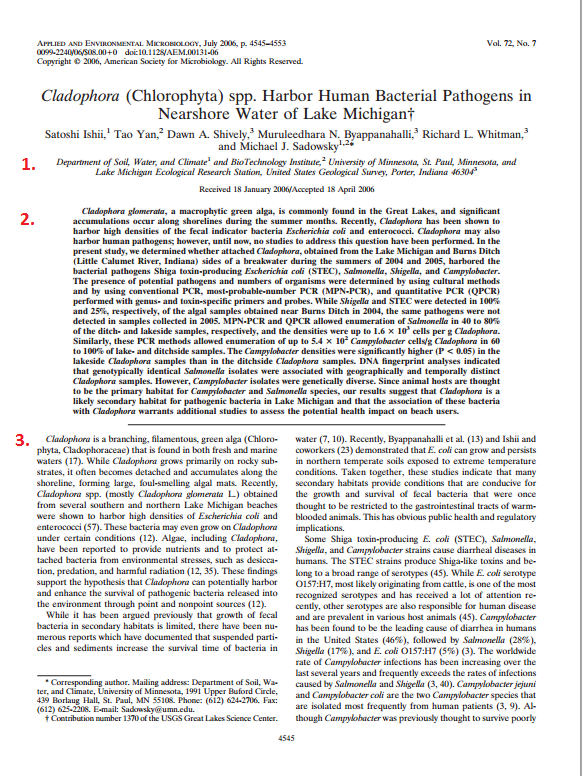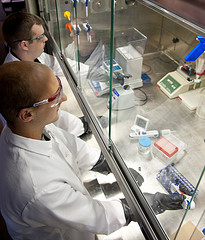Distinguishing a Research Article From a Popular Article
Worried that you might be reading a trade article from a scholarly article, or a review article from a scientific research article?
Start by looking for the distinctive markers of a scholarly article: are the authors' degrees or university affiilations listed? Do you see an abstract? How about charts, tables, graphs?
Confused? Take a look at page one of a scholarly article below:

Notice the following:
- The authors list a university affiliation
- The abstract is right in the center of the page
- The (unmarked) introduction
Once you are certain that you are looking at a scholarly article, make certain that your article is a scientific research (and not review) article by looking for the following distinctive sections:
Abstract
This is a paragraph-long summary of the contents of the article, including the hypothesis and conclusion. This can be a vitally important section which will help you 1. figure out the focus of the article and 2) help you to puzzle through the especially dense language of some articles-- after all, you know where the authors are heading!
Introduction
The introduction introduces the topic, explaining what research has already been done on this topic ( often called a literature review) and what questions the researchers were trying to answer.
Method
The method section describes how the experiment was conducted.
Results
The results list the data collected from the experiment.
Discussion
The discussion section explains the significance of the results: was the hypothesis supported, or were there unanticipated results?
Conclusion
The conclusion restates the results of the experiment and states further areas for research: what questions remain to be answered?
References or Works Cited
This is where the authors note the previously conducted research which helped to shape their own work in this study.
Some of these sections may be merged with other sections, have slightly different names, or may not be labeled, but all should be present in one way or another.
Want to take a closer look? Cladophora (Chlorophyta) spp. Harbor Human Bacterial Pathogens in Nearshore Water of Lake Michigan is a research article found on PubMedCentral, a government-sponsored free database with many free articles available. You can use this as a model scholarly research article.
- Check out this handy guide to reading scholarly articles.
- Remember that you can use reference databases to explain words or concepts that you're unfamiliar with. Try searching Credo or Gale to start.
Questions? Contact me or the reference desk and you can verify that a source is a scholarly research article. (Or we can help you find one.)
